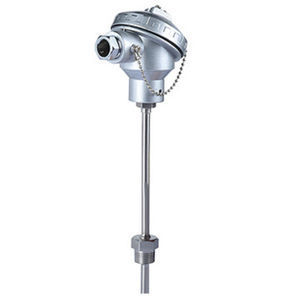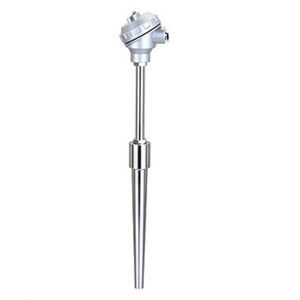
- Detection - Measurement
- Temperature and Humidity Measurements
- Ceramic temperature sensor
- Ningbo Konoo Instrument MFG. Co., Ltd.

- Products
- Catalogs
- News & Trends
- Exhibitions
Type E thermocouple RTH type J thermocoupletype K thermocoupleceramic
Add to favorites
Compare this product
Characteristics
- Technology
- type K thermocouple, type J thermocouple, type T thermocouple, type E thermocouple, type N thermocouple, ceramic
- Applications
- high-temperature, air
- Temperature
Min.: 0 °F
(-18 °C)Max.: 3,600 °F
(1,982 °C)
Description
The RTH protection tube is a dense, sintered ceramic especially designed for use in many molten non-ferrous metals and corrosive chemicals. It is very strong, thermally shock resistant and dimensionally stable. Additionally RTH is vacuum-tight and it has high electrical resistance. Mechanical strength is retained at extremely high temperatures (over 1000 degrees Celsius in air). Together, these features with very low wear resistance, make RTH an ideal thermocouple protection tube not necessary because RTH has very low thermal expansion coefficient. The RTH protection tubes are also recommended for use in oxidizing environments to 2200 degrees Fahrenheit. Most acids, such as hydrochloric, nitric sulfuric, and phosphoric do not attach RTH. This material is also resistant to hydrogen gas. It is not recommended for use with caustic solutions and hydrofluoric acid. We stock a broad line of insulators for use with all types and sizes of thermocouple wire. Mullite insulators are recommended for use with base metal thermocouple wire and element types: E, J, K, N, and T up to 2000degrees Fahrenheit. High purity alumina oxide is recommended for use with noble or refractory thermocouple wire and element types: B, C, D, R, and S. Re-crystallized alumina is suitable for up to 3600 degrees Fahrenheit.
Other Ningbo Konoo Instrument MFG. Co., Ltd. products
Thermocouple
Related Searches
- Industrial pyrometer
- °C pyrometer
- Waterproof thermometer
- Stainless steel pyrometer
- Analog thermometer
- Precision pyrometer
- Probe thermometer
- °F pyrometer
- IP65 pyrometer
- High-precision pyrometer
- Bimetallic thermometer
- Dial pyrometer
- Food thermometer
- Screw-in pyrometer
- Chemical product pyrometer
- Glass pyrometer
- Gas expansion thermometer
- Dial thermometer
- Direct-reading thermometer
- Aluminum pyrometer
*Prices are pre-tax. They exclude delivery charges and customs duties and do not include additional charges for installation or activation options. Prices are indicative only and may vary by country, with changes to the cost of raw materials and exchange rates.


